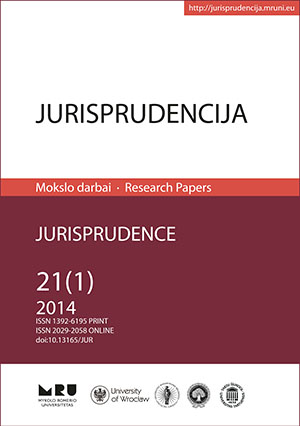Banko pertvarkymo teisiniai mechanizmai
Bank Resolution Mechanisms According to Lithuanian Case Study
Author(s): Tomas AmbrasasSubject(s): Law, Constitution, Jurisprudence
Published by: Mykolas Romeris University
Keywords: bank resolution; bank liquidation; bank insolvency law; financial crisis
Summary/Abstract: Recently, the banking industry has faced considerable challenges in Lithuania. Two banks faced insolvency almost in a year’s time. These cases subsequently have undergone dramatic changes in society, which now has a new legal viewpoint. Resolution and the bail-out of failing banks have an impact on the perceived credit risk as well as the financial soundness and the solvency of banks. Besides, they lead to many legal issues, which should be investigated at a scientific level. Regarding bank insolvency proceedings, essentially there are two options: direct liquidation (bank bankruptcy) or bank resolution (different legal techniques of restructuring). The main objective of bank restructuring is to restore individual banks or their solvency, merge, sell, or recapitalize banks, recover assets, operations and procedures. On the other hand, the main objectives of bank liquidation are to reduce creditors’ losses and to eliminate insolvent banks from the market under the regular insolvency procedures. The main objective of the paper is to analyze bank resolution methods from the perspective of Lithuanian law. Bank insolvency law is not analyzed and investigated essentially in the Lithuania’s scientific field. Two issues are analyzed in this paper: legal options and legal mechanisms of bank resolution and, on top of that, effects of implementing bank resolution tools. Resolution tools are interconnected with recent Lithuanian bank insolvency cases and based on their practice. The main aim of the article is to analyze, investigate and expose bank resolution techniques according to the Lithuanian law system. The statements are derived from analyses of scientific literature, relevant legislation, practice of the courts and relevant reports. The paper is written from the perspective of Lithuanian law.
Journal: Jurisprudencija
- Issue Year: 21/2014
- Issue No: 1
- Page Range: 89–114
- Page Count: 26
- Language: Lithuanian

